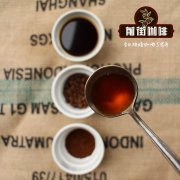How do you drink roses in summer at Donna Manor, Costa Rica? recommended by Costa Rica COE bidding for coffee beans

Professional coffee knowledge exchange more coffee bean information please follow the coffee workshop (Wechat official account cafe_style)
Introduction:
The Beneficio Brumas del Zurqui was founded in 1880 by the Rodri í guez Carballo family and is now run by Juan Ram ó n Alvarado Rodr í guez. Finca Dona Clemencia is a new estate he bought three years ago, renamed Dona Clemencia in memory of his mother, Rodri. The estate, which has only one hectare of geisha breeds (Geisha), has just had a small harvest in 2017. It won 28th place in the Costa Rican COE Cup, which is the 28th international bid. In 2002, when Juan Ram ó n Alvarado Rodr í guez first set up a processing plant in the Central Valley (Central Valley), there were only three small processing plants in the area, including his.
Costa Rica has a long history of cultivating coffee, but in the past 10 years, the new method of "dry" treatment has become fashionable, collectively known as "honey treatment", which uses the scraper to adjust the scraping degree of the pulp. The output shows a "honey feeling" from light to dark (white, yellow-red-white, yellow-red-black) with a thick sense of acidity and complex aroma. Each has its own depth and advantages. Honey treatment started in Costa Rica, while Costa Rica has also developed a micro-processing plant (micro mill) coffee characteristic development, the main feature development is the hope that each small farm can have its own system for handling beans, so that the processing can be done by the farm itself, and the best specialty coffee raw beans can be produced according to their own unique process. Finca Brumas del Zurqui Manor has its own family-owned raw bean processing plant, which originally means "misty valleys". In addition to growing coffee, the estate also helps produce nearby estates and coffee farmers. Began to grow coffee in 1880, Brumas won the champion of Costa Rica National Coffee Competition in 2006, and the "honey treatment" of the manor was immediately valued by bean merchants all over the world. So since 2007, Brumas' coffee beans have always been in the competition.
It was snapped up immediately.
This international bid for micro-batches of Costa Rican Coffee Blumas Manor family processing plant (Beneficio Brumas del Zurqui) processed by Dona Clomancia Manor (Finca Dona Clemencia) of the geisha breed (Geisha) honey-treated coffee. Juan Ramon Alvarado and Natalia Gomez Manor is a miniature water treatment plant established in 2002 by the Juan Ramon Alvarado and Natalia Gomez family. The family has been engaged in coffee cultivation and production for more than a century. In particular, Juan Ramon Alvarado is the leader in honey coffee processing technology. In 2016, the COE Cup in Costa Rica was awarded the third runner-up treatment plant. In 2015, El Beneficio, the estate of family member Natalia Gomez, won the second place in the COE competition through the experience of the Brumas processing plant in honey processing technology. It is no accident that his family manor and processing plant technology became famous. Juan Ramon Alvarado he currently has several estates (Zamora) and Baby (La Nena) as well as others. Coffee varieties are bourbon, Kaddura (caturra), geisha and others.
END
Important Notice :
前街咖啡 FrontStreet Coffee has moved to new addredd:
FrontStreet Coffee Address: 315,Donghua East Road,GuangZhou
Tel:020 38364473
- Prev

Introduction of Blanca Coffee producing area in Costa Rica _ COE winning batches of Black Honey Coffee treatment Story
For more information on coffee beans, please follow the Coffee Workshop (Wechat official account cafe_style). This is a black honey treated coffee from Brunca. That producing area is new to boutique coffee buyers all over the world. It is not the famous Tarrazu, nor is it the West Valley that has sprung up in recent years.
- Next

Costa Rica anaerobic fermented Coffee Lajas Manor anaerobic fermented Coffee beans Flavor Story
Professional coffee knowledge exchange more coffee bean information please follow Coffee Workshop (Wechat official account cafe_style) Costa Rica Coffee-anaerobic fermented Lajas Manor Coffee beans French Francisca and Oscar Chacn, is the third generation operator of Las Lajas, Las Lajas is located in Costa Rica
Related
- Detailed explanation of Jadeite planting Land in Panamanian Jadeite Manor introduction to the grading system of Jadeite competitive bidding, Red bid, Green bid and Rose Summer
- Story of Coffee planting in Brenka region of Costa Rica Stonehenge Manor anaerobic heavy honey treatment of flavor mouth
- What's on the barrel of Blue Mountain Coffee beans?
- Can American coffee also pull flowers? How to use hot American style to pull out a good-looking pattern?
- Can you make a cold extract with coffee beans? What is the right proportion for cold-extracted coffee formula?
- Indonesian PWN Gold Mandrine Coffee Origin Features Flavor How to Chong? Mandolin coffee is American.
- A brief introduction to the flavor characteristics of Brazilian yellow bourbon coffee beans
- What is the effect of different water quality on the flavor of cold-extracted coffee? What kind of water is best for brewing coffee?
- Why do you think of Rose Summer whenever you mention Panamanian coffee?
- Introduction to the characteristics of authentic blue mountain coffee bean producing areas? What is the CIB Coffee Authority in Jamaica?

